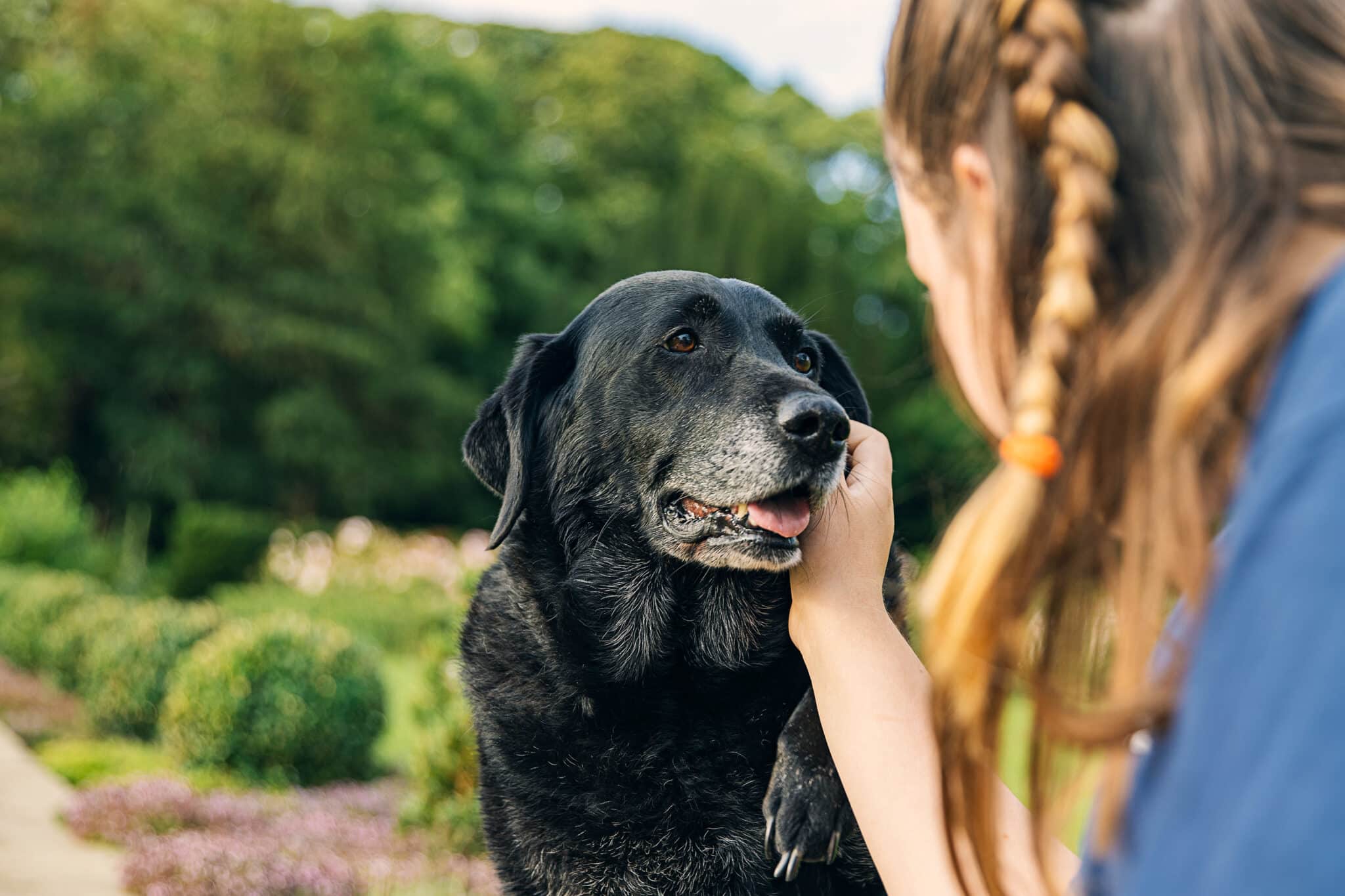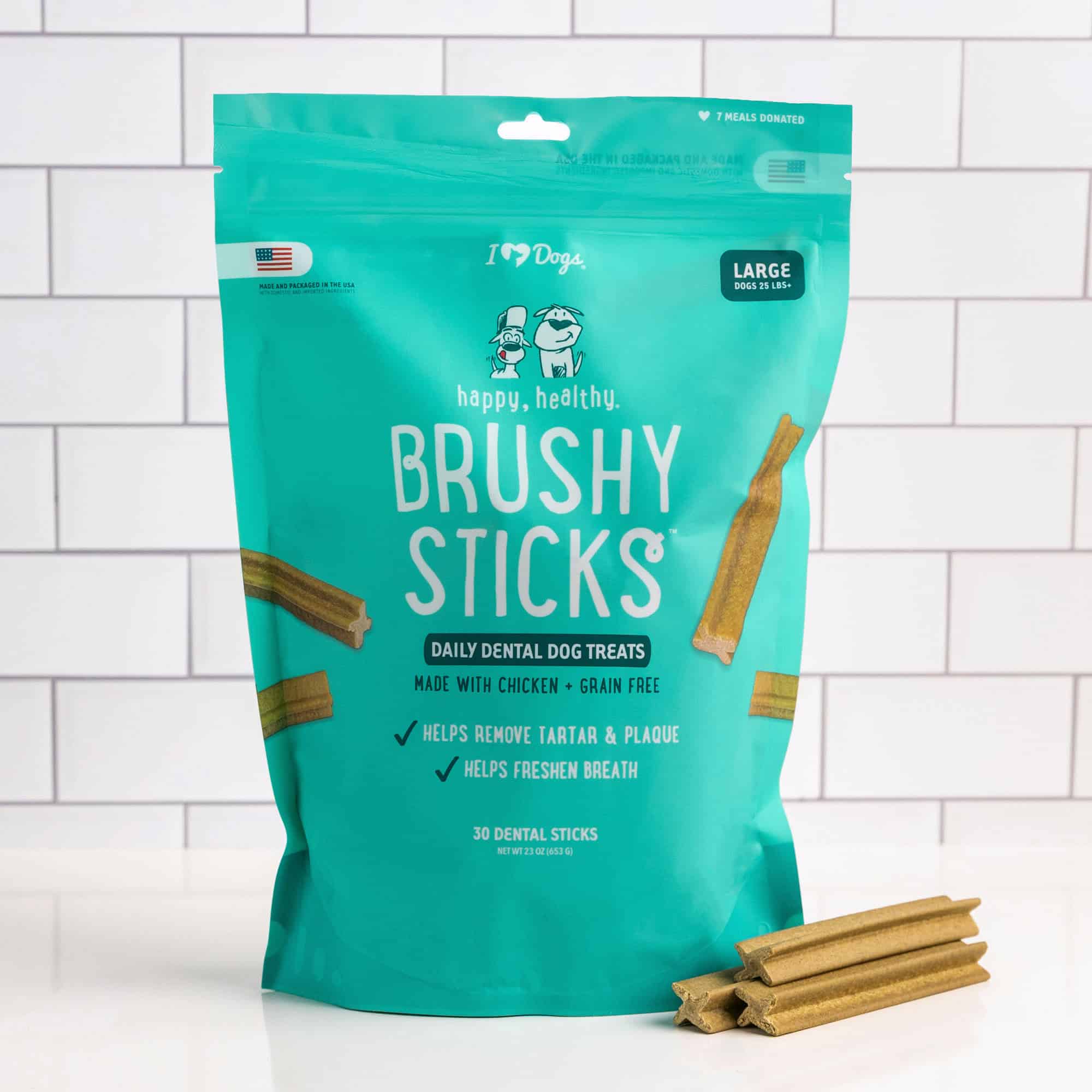Did you know that 80% of dogs will have some form of periodontal (gum) disease by the age of 2? That number certainly won’t improve as your dog ages. Dogs are five times more likely than humans to develop gum disease, and that can lead to a whole host of problems.
Your senior dog isn’t just at risk of developing problems like mouth abscesses, tooth loss, and even a fractured jaw, but they are also at risk of developing heart, lung, and kidney problems!

The fact is that dental health is crucial to your dog’s overall health, and dental problems only become more serious as your dog ages. What do you need to know about taking care of your senior dog’s teeth and gums? Here are some tips.
#1 – Your dog’s teeth need attention every day.
Every time your dog eats, bacteria starts to merge along with food particles and saliva, turning into plaque on your dog’s teeth. Plaque is recognized by your dog’s immune system as a foreign invader, which causes white blood cells to attack. The bacteria in plaque cause the white blood cells to release enzymes that actually break down gum tissue, which leads to inflamed gums, destroyed tissue, and loss of bone. Eventually, this all leads to tooth loss and a wide variety of other health problems.
The more often you can remove plaque and bacteria from your dog’s teeth, the healthier his gums will be. This means that you should be addressing your dog’s teeth at least once a day, although more is better. Your dentist probably recommends that you brush your teeth twice a day, and the same could be recommended for your dog, especially since you may be making up for years of periodontal disease in your senior dog.
#2 – Brushing is best
If your dog will tolerate it, use a vet-approved toothbrush designed for pets with an enzymatic toothpaste specifically formulated for dogs. It is the best thing you can do to help care for your senior dog’s teeth and gums. If your dog doesn’t enjoy the flavors of traditional dog toothpaste, organic coconut oil can be substituted since it has antimicrobial qualities.
#3 – Try dental toys
There are certain types of toys that your senior dog can chew on that will help stimulate his gums and keep his teeth clean, too. These are better off being used in conjunction with daily toothbrushing, but if your senior dog absolutely will not tolerate having his teeth brushed, these chew toys are certainly better than nothing.
Examples of toys that can help keep your dog’s teeth clean include the Fresh Mint Scented Brushing Ball. The best part about it is that each purchase provides a toy to a shelter dog in need. Dogs that act playful are more likely to get adopted, so these toys are a great way to improve your own dog’s teeth while also improving the life of a shelter dog!
#4 – Wipes and sprays can help
If your senior dog is already suffering from painful gum disease, a toothbrush may be too painful. You may need to start with something gentler on your dog’s gums, such as a dental spray or wipe to work on removing plaque without irritating your dog’s already sore gums. These products should be used at least once a day for maximum benefit.
#5 – Dental treats may help
Believe it or not, you can help improve your senior dog’s dental health while also treating him, giving your pup the best of both worlds – with a dental treat! iHeartDogs Brushy Sticks are specifically designed to control plaque, reduce tartar buildup, freshen breath, and help maintain healthy teeth and gums. These easy-to-digest sticks are gluten-free, don’t contain any artificial colors, and are made in the United States.
#6 – Go to the vet
Once the plaque on your dog’s teeth has turned into solid tartar or your dog’s gum disease has progressed past a certain point, your dog will likely need a professional cleaning. This does require anesthesia. While it’s a common misperception that senior dogs have higher risks with anesthesia than younger dogs, the only risk factors are certain health issues. A senior dog with no health issues does not have any higher risks associated with anesthesia than a younger dog. Your vet will likely want to perform blood or other tests to check for health issues before agreeing to put your dog under anesthesia.
Nonprofessional dental scaling (NPDS), also known as anesthesia-free dentistry, only addresses the plaque and tartar on visible areas of your dog’s teeth and does not get under the gum line. While your dog’s teeth may look better, any periodontal disease that your dog is suffering from will not be addressed, and tartar left under the gumline will only add to gum problems.
These statements have not been evaluated by the Food and Drug Administration. This product is not intended to diagnose, treat, cure, or prevent any disease. The information on this website is not intended to replace a one-on-one relationship with a qualified healthcare professional.




